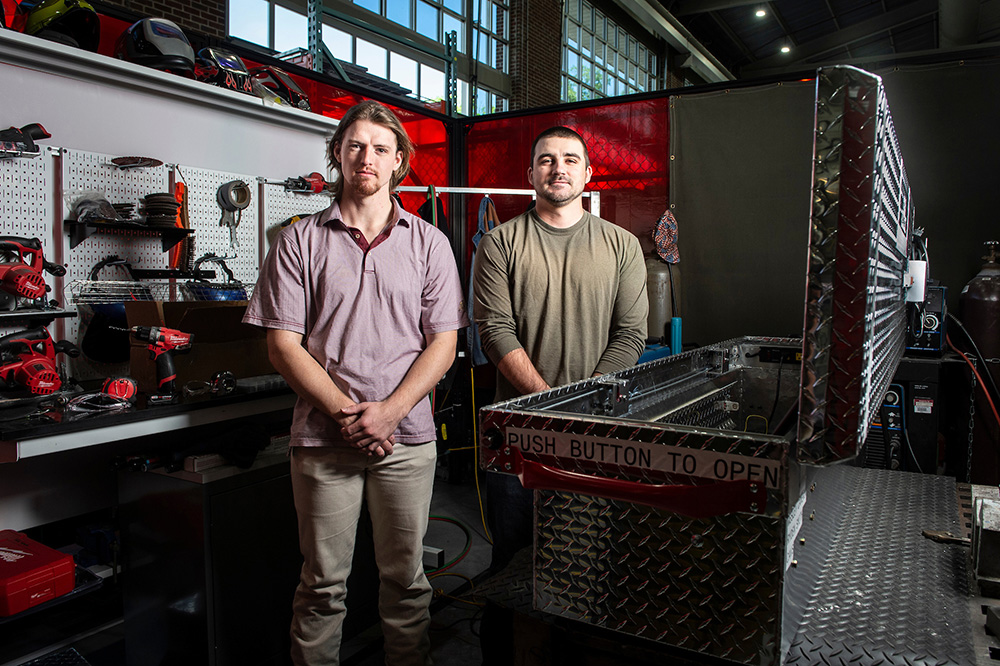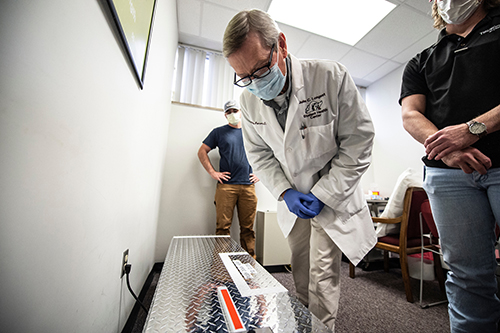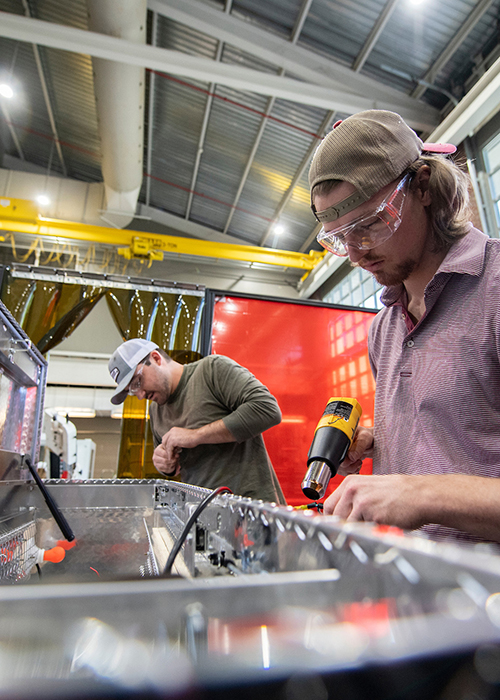CAVS Researchers and MSU Engineering Students Work together to Create Sterilizer for Personal Protective Equipment
April 16, 2020
Ryden Smith, left, an MSU mechanical engineering graduate student from Tuscaloosa, Alabama, and Wesley Cameron, a senior mechanical engineering major from Richton, turned a truck toolbox into a UV sterilization device for the university’s Longest Student Health Center.
Photo by Logan Kirkland
Photo by Logan Kirkland
A team of two students, under the leadership of researchers at MSU’s Center for Advanced Vehicular Systems, built and tested the device before delivering it to the health center on Monday [April 13]. Built using low-cost materials, the device can sterilize 15-20 masks in minutes, filling a need for the health center during the COVID-19 pandemic and a nationwide shortage of masks.
“It’s a great application of what we learn in school because there’s not always a standard solution,” said Ryden Smith, a mechanical engineering graduate student from Tuscaloosa, Alabama. “I’ve been really honored with the opportunity to work on this and help our healthcare providers.”
Working with Smith on the project is Wesley Cameron, a senior mechanical engineering major from Richton. He said the team looked at established healthcare sterilization protocols and studies on UV light’s effects on N95 masks to design the device and determine best practices.
Dr. Cliff Story, MSU director of University Health Services, reached out to campus officials to see if someone at the university could build a sterilization device to help the center get more use out of its masks amid a nationwide shortage.

Dr. Philip Pearson, a physician at MSU’s Longest Student Health Center, examines the UV sterilization device built by MSU mechanical engineering students after the device was delivered to the health center this week.
Photo by Logan Kirkland.
Photo by Logan Kirkland.
The students at CAVS worked under the direction of Associate Director Hongjoo Rhee’s research team and were encouraged and aided by CAVS staff including Purchasing Coordinator Andrea Hemmingway Oakley, Research Engineer Jennie Maddox and Assistant Professor of Mechanical Engineering Wil Whittington.
Whittington explained that while using UV light to sanitize medical gear is not new, large hospitals often have a single room dedicated to UV sterilization. Portable UV sterilizers are available, but they cost hundreds of dollars and are much smaller than the device his students made using a toolbox.

Ryden Smith, right, and Wesley Cameron work to convert a truck toolbox into a UV sterilization device at CAVSs. Smith is a graduate student in mechanical engineering and Cameron is a senior mechanical engineering major.
Photo by Logan Kirkland.
Photo by Logan Kirkland.
The CAVS team will work with health center staff this week to determine protocols and best practices for using the device. They plan to share the design specifications so other health care centers can have similar devices made and extend the lifespan of their personal protective equipment.
For more on CAVS, visit www.cavs.msstate.edu. For more on MSU’s James Worth Bagley College of Engineering, visit www.bagley.msstate.edu.
MSU is Mississippi’s leading university, available online at www.msstate.edu.
Story by James Carskadon
